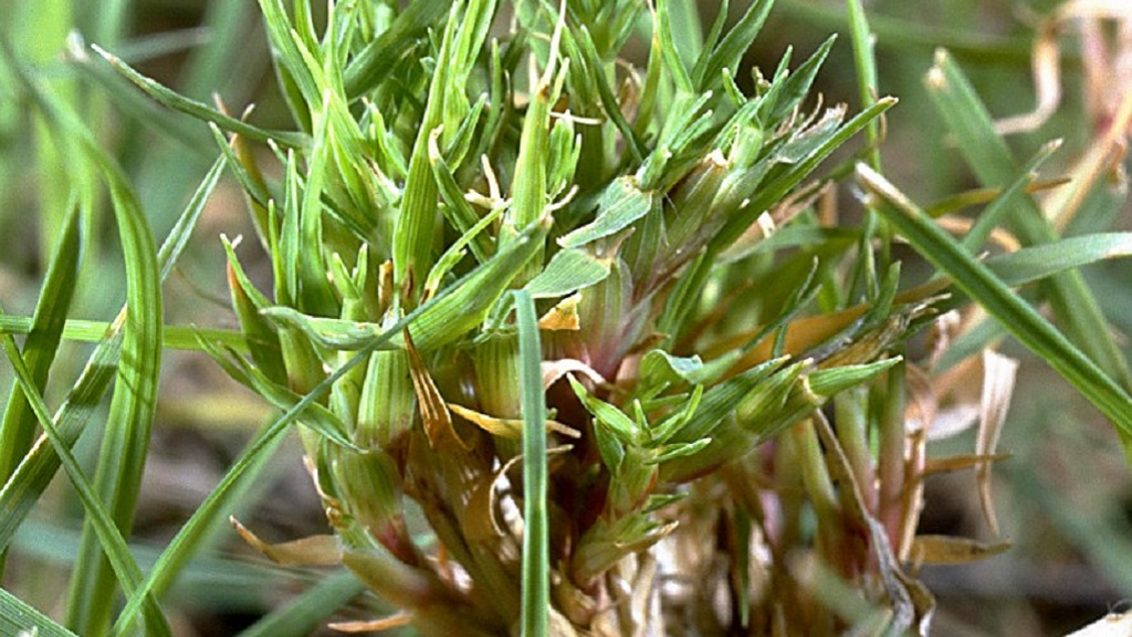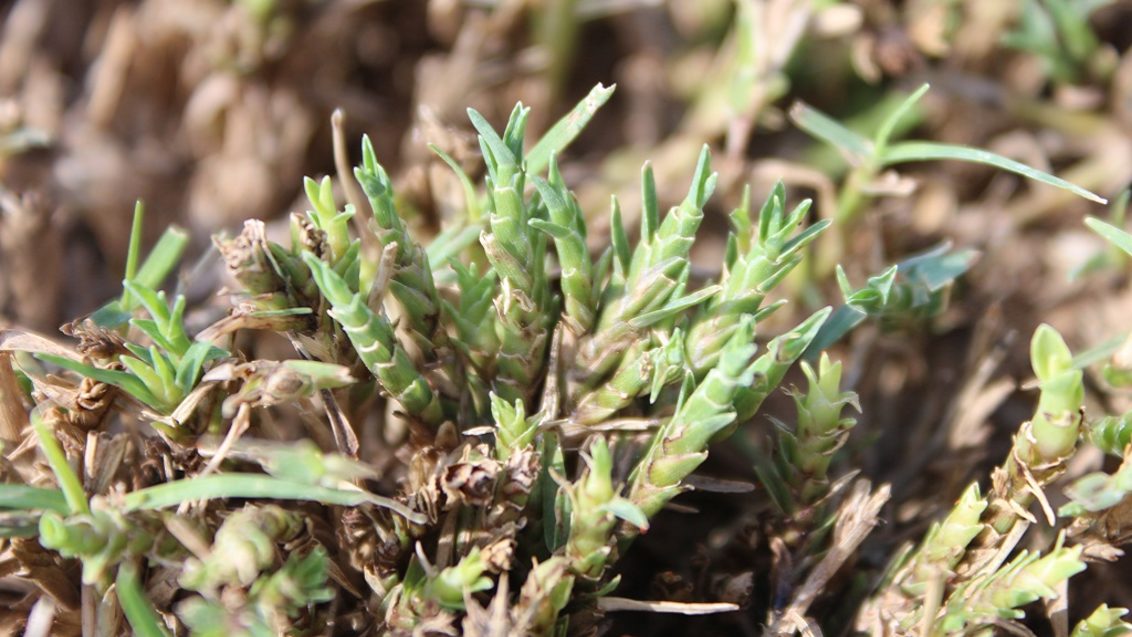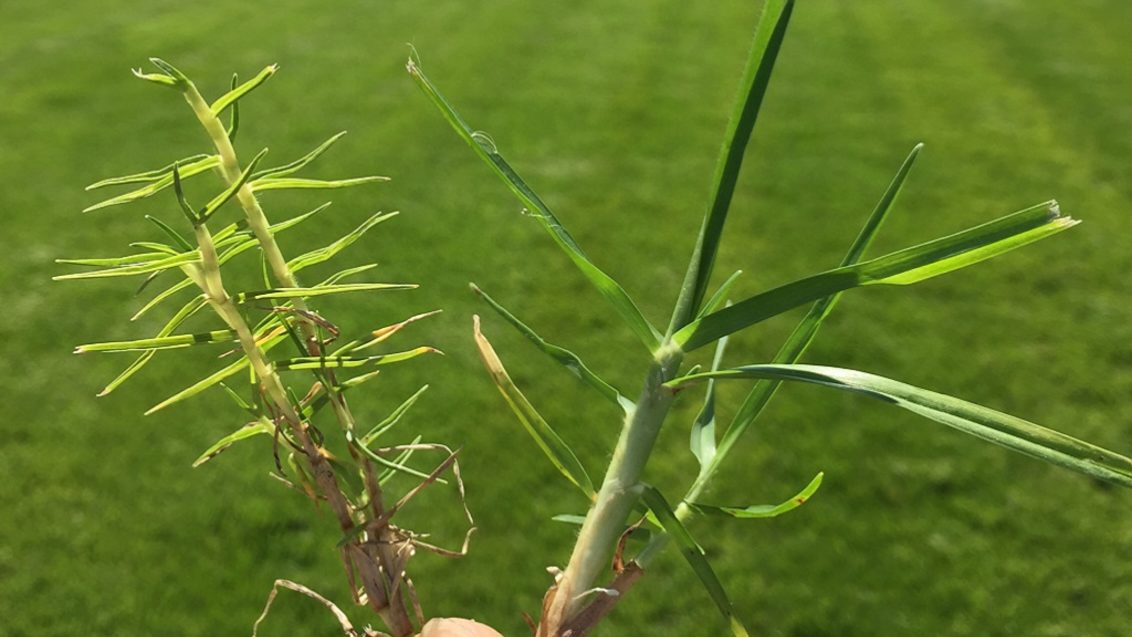Couchgrass Mite
Insect Pest
Identification
The immature Couchgrass Mite is a translucent bodied mite which is invisible to the naked eye at only 0.1-0.15 mm in length. As they mature the adult stage is slightly larger with a creamy white elongated abdomen up to 0.2 mm long. Infestations of mites are typically identified by the characteristic symptoms of plant injury in the field. Once visible injury has occurred, pest pressure must be considered to be extensive. Infected turf first exhibits a slight yellowing of leaf tips followed by shortening of internodes and leaves, producing a rosetted or tufted growth known as “witches broom”. Severe infestations result in stand loss, and large dead areas soon become infested with weeds. Damage is usually most severe during hot, dry conditions.
Life Cycle
Couchgrass Mite has a very short lifecycle (10-14 days) and multiple generations per season. Couchgrass Mite is physically difficult to get to as it lives in tight spaces between leaf sheaths. Development from egg to adult requires 5-10 days. After eggs hatch, they pass through 2 nymphal instar stages and molt to adults. All life stages live together, protected under the leaf sheath, and often 100-200 mites and eggs can be observed under a single leaf blade. Mites are spread on grass clippings and have been observed hitch-hiking on other turf insects. Dispersal in wind is also common.
Symptoms
- Infestations are easily recognisable through the observation of plant injury in the field. Once visible injury has occurred, pest pressure must be considered to be extensive.
- Infected grass first exhibits a slight yellowing of leaf tips followed by shortening of internodes and leaves, producing a rosetted or tufted growth.
- Severe infestations result in stand loss, and large dead areas soon become infested with weeds.
Considerations
- Damage is usually most severe during hot, dry conditions.
- Avoid excessive nitrogen applications.
- Use multiple chemistries to ensure consistent control and minimise resistance development
- Ensure spray application windows cover multiple lifecycles
- Specific recommendations to ensure proper application placement in between leaf sheaths
- Remove damaged plant material and clippings to allow real turf quality improvements
- Mow closely to remove affected plant parts.
Controls
AGADOR can be used as a preventative or early curative miticide when treating nymph and adult Couchgrass mites. Ideally AGADOR is used as the first application in a two-step process and is rotated with an alternate chemistry from a different mode of action (MOA) group. AGADOR represents the knockdown component of a program approach aimed at managing this pest better than previously possible.
HIGRAN can be used as an early curative miticide when treating nymph and adult Couchgrass mites. Ideally HIGRAN is used as the second application in a two-step process and is rotated with AGADOR.
In a case where environmental conditions have become conducive to mite activity and early symptoms of damage (eg witches broom) has been noticed on a couchgrass sward, apply AGADOR first at the rate of 1 to 2 L/ha to knock the population down quickly and limit early damage. Follow this with an application of HIGRAN at 500 mL/ha, 10 to 14 days later for residual control of up to 4 weeks. This combination treatment should be considered a 6 week program in total and can be repeated if environmental conditions and pest pressure are sustained.
Strong adherence to this rotational program is paramount for responsible chemical use and good resistance management.



